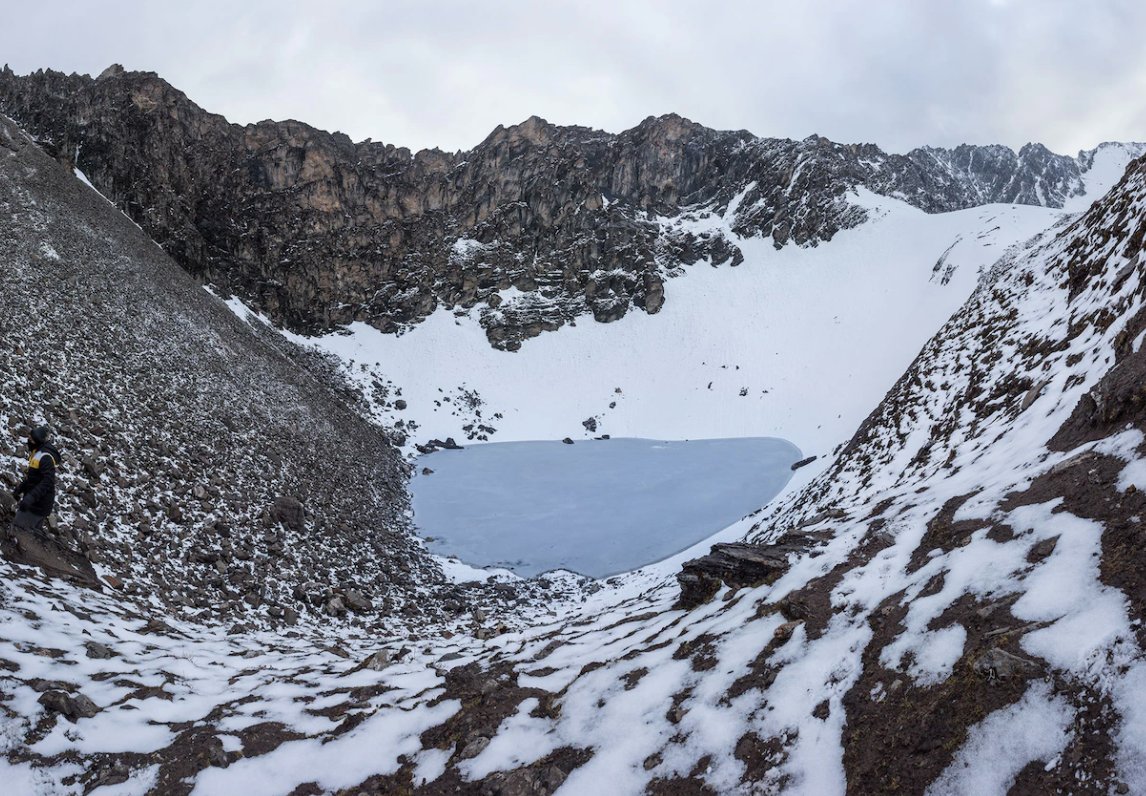
There’s a lake hidden deep in the Himalayas in northern India called Roopkund Lake.
But what makes Roopkund unique isn’t just its beauty, no...
It’s mysteriously surrounded by 700 human skeletons... and scientists STILL can't figure out how they got there.
A thread:
But what makes Roopkund unique isn’t just its beauty, no...
It’s mysteriously surrounded by 700 human skeletons... and scientists STILL can't figure out how they got there.
A thread:

The year was 1942.
A British forest ranger was trekking in the Himalayas, near the border of Tibet and Nepal, until he came to a halt.
But what stopped him dead in his tracks wasn’t a beautiful view or a pause for water.
It was human remains.
Lots of them.
A British forest ranger was trekking in the Himalayas, near the border of Tibet and Nepal, until he came to a halt.
But what stopped him dead in his tracks wasn’t a beautiful view or a pause for water.
It was human remains.
Lots of them.

Since then, scientists have been bewildered by the 700 or so human skeletons that are scattered around Roopkund Lake.
As the BBC writes:
"Who were these people? When did they die? How did they die? Where did they come from?"
Even today, we still aren't sure.
As the BBC writes:
"Who were these people? When did they die? How did they die? Where did they come from?"
Even today, we still aren't sure.

Early research suggested the following about the remains at Roopkund:
•They belonged to those of good health
•They were predominately middle-aged men (between 35 and 40)
•They came from a single group and would have died all at once, sometime in the 9th century
•They belonged to those of good health
•They were predominately middle-aged men (between 35 and 40)
•They came from a single group and would have died all at once, sometime in the 9th century

With these assumptions, several theories were born to explain how these skeletons appeared at Roopkund:
•An Indian King and his attendants were struck by a “righteous deity”
•Indian soldiers were caught in a catastrophic blizzard
•Victims of an epidemic were buried there
•An Indian King and his attendants were struck by a “righteous deity”
•Indian soldiers were caught in a catastrophic blizzard
•Victims of an epidemic were buried there

But now...a recent 5-year-long study from 16 Indian, American, and German institutions suggests all of these assumptions (and theories) are...well, flat-out wrong. 

An analysis and carbon dating of 38 skeletons revealed the following:
•Of the 38 bodies, 15 belonged to women (40%)
•The deaths could have been separated in time by as much as 1,000 years!
•Of the 38 bodies, 15 belonged to women (40%)
•The deaths could have been separated in time by as much as 1,000 years!
But perhaps most surprising about the new study was their demographic:
These folks were definitely NOT from a single group as earlier believed.
It seems whilst some of the skeletons belonged to those from South Asia, another sizeable group belonged to those from…
Europe!
These folks were definitely NOT from a single group as earlier believed.
It seems whilst some of the skeletons belonged to those from South Asia, another sizeable group belonged to those from…
Europe!

So….HOW could hundreds and hundreds of people - from different parts of the world - die at the same spot, remote in the Himalayas, over a span of 1,000 years? 

It wasn’t an epidemic -- there are no signs of ancient bacterial pathogens.
It wasn’t a war -- there weren't any weapons at the site.
It wasn’t a band of traders -- Roopkund isn’t on an ancient trade route.
It wasn’t a war -- there weren't any weapons at the site.
It wasn’t a band of traders -- Roopkund isn’t on an ancient trade route.
Some argue it could have been a Hindu pilgrimage gone wrong (perhaps cut tragically short by a snowstorm or some other natural disaster).
But again...what would explain the presence of hundreds of folks from present-day Greece?
But again...what would explain the presence of hundreds of folks from present-day Greece?

Éadaoin Harney, the lead author of the recent study, is still admittedly...unsure:
"It is still not clear what happened at Roopkund Lake, but we can now be certain that the deaths of these individuals cannot be explained by a single event.
We are still searching for answers."
"It is still not clear what happened at Roopkund Lake, but we can now be certain that the deaths of these individuals cannot be explained by a single event.
We are still searching for answers."
Have any theories of your own?
Comment below👇
Comment below👇
Learn something new today?
Follow @DavidZabinsky for more informative threads on the people and places of our world.
Follow @DavidZabinsky for more informative threads on the people and places of our world.
Sources:
bbc.com/news/world-asi…
nationalgeographic.com/culture/articl…
nature.com/articles/s4146…
theatlantic.com/science/archiv…
bbc.com/news/world-asi…
nationalgeographic.com/culture/articl…
nature.com/articles/s4146…
theatlantic.com/science/archiv…
• • •
Missing some Tweet in this thread? You can try to
force a refresh

















